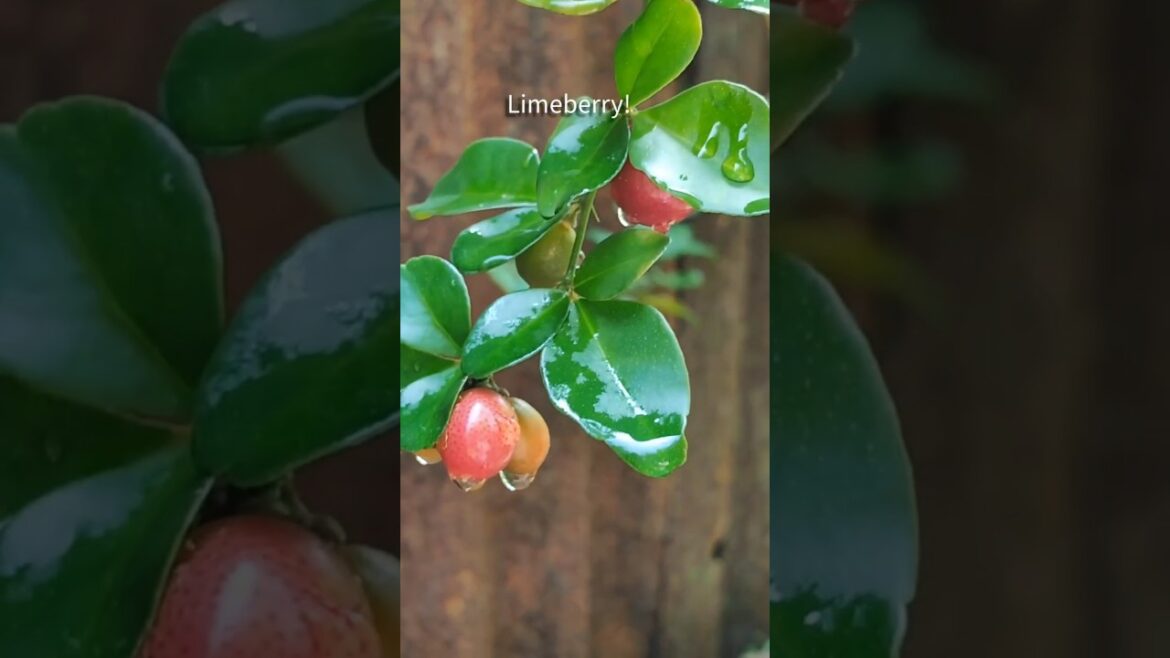🎁👉 #Moreshorts for more shorts or
👉 SCTAN56 (#Youtube search) or
👉 @Sctan56 (#Google search)
#Limeberry
The term “limeberry” can refer to a couple of different #plants, most notably:
Triphasia trifolia:
This is a #shrub related to #citrus, native to #tropical #southeastern #Asia.
It produces small, red, edible fruits that have a flavor reminiscent of #lime.
It is also known as “lime berry” or “lemondichina.”
It can be considered invasive in some areas
#Characteristics:
This evergreen shrub, belonging to the Rutaceae family (the citrus family), is known for its glossy, dark green, trifoliate leaves (meaning they come in groups of three).
A distinguishing feature is its sharp spines, which make it useful as a hedge plant.
It produces small, #fragrant white flowers that blossom throughout the year, followed by small, #reddish-orange to bright red, berry-like fruits.
The fruit’s peel contains oil glands that emit a lemon-like scent.
Geographic Distribution and Habitat:
Native to Southeast Asia, including Malaysia, and the Christmas Islands.
It thrives in #tropical and #subtropical #climates.
It can adapt to various conditions, growing in both #sunny and #shaded areas, but prefers #well-drained soil.
#Uses:
Edible Uses:
The ripe fruits are #edible, with a sweet-acidic flavor. They can be eaten raw, pickled, or made into #jams, #preserves, and #drinks.
#Medicinal Uses:
Traditionally, the fruits have been used to treat #coughs and #sorethroats.
The leaves have been used to address colic, diarrhea, and skin ailments.
#Ornamental and Practical Uses:
It’s often grown as an ornamental shrub due to its attractive foliage and fragrant flowers.
Its #thorny nature makes it effective as a #defensive #hedge.
It is also used in #bonsai.
#Cultivation:
It can be propagated from seeds or stem cuttings.
It prefers well-drained soil and tolerates a range of soil types.
It requires moderate watering and should not be overwatered.
#Ecological Considerations:
In some regions, Triphasia trifolia has become an invasive species, spreading through bird dispersal of its seeds and forming dense thickets that can displace native vegetation.
#Mulberries :
Mulberries are native to #temperate #Asia and #North #America. The three most common commercial species are #white, #black, and #red mulberry.
White mulberry
Native to #China and #India
A fast-growing, small to medium-sized tree
Also known as common mulberry and #silkworm mulberry
One of the primary species used to feed silkworms
Black mulberry Native to #western #Asia, Brought to #Europe before the #RomanEmpire, and Continued to be grown for its fruits.
Red mulberry
Native to central and eastern #UnitedStates
Some Native American tribes used an infusion of the bark as a laxative or purgative
The #sap was applied to the skin to treat #ringworm
Mulberries are part of the Moraceae family. They are the fruit of small to medium-sized trees. Mulberry plants are also important as food for silkworms.
Mulberries have been used for a variety of purposes, including:
Food for silkworms
Food for #livestock
#Wood for #furniture or #boats
Making #pies or #preserves
Making sweet #dumplings
Making #cloth
Making #yellowdye

